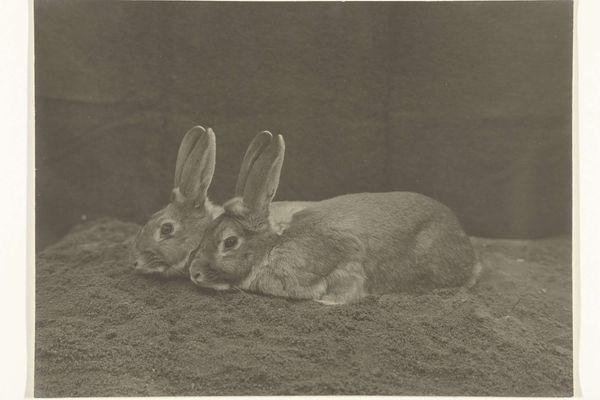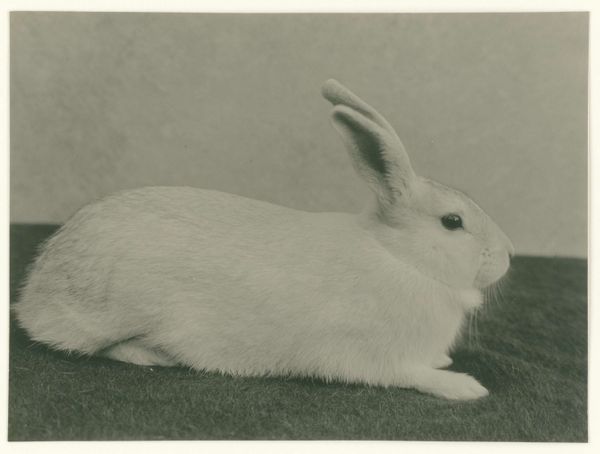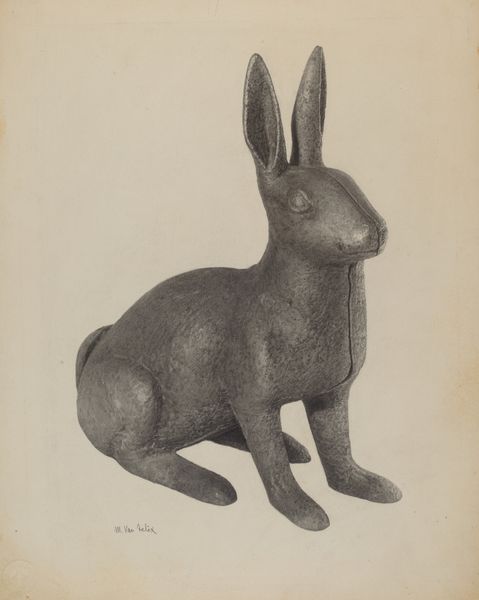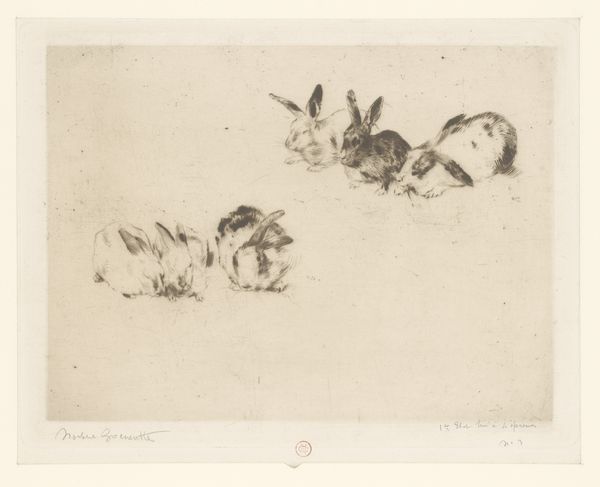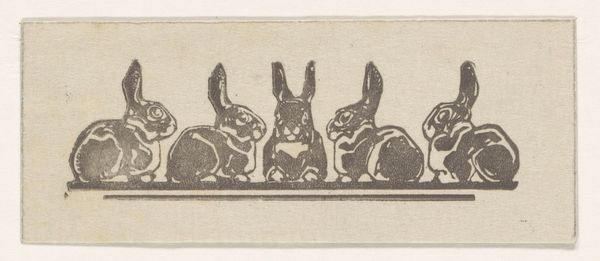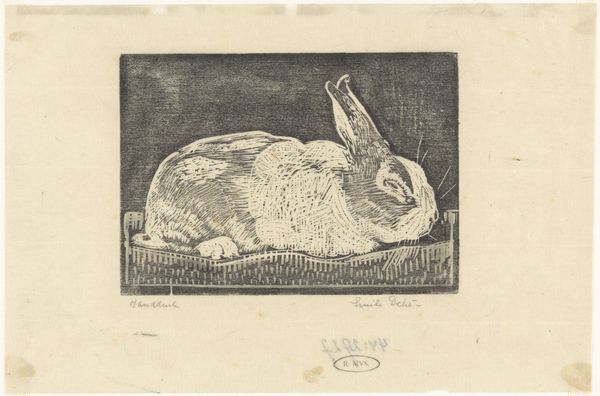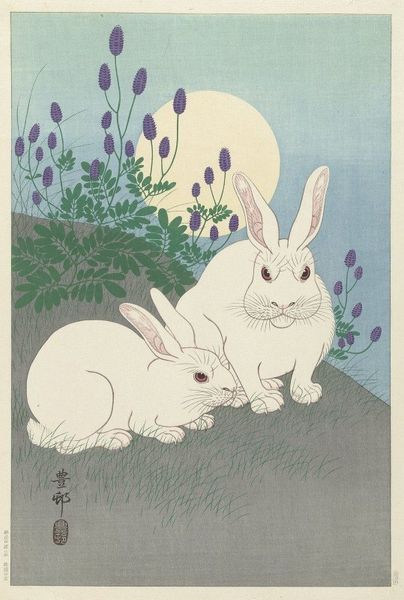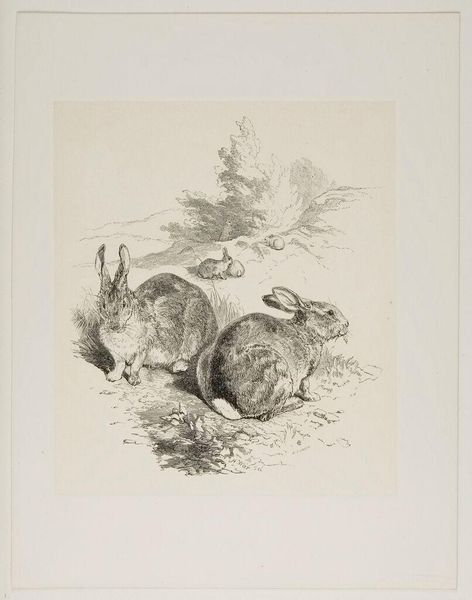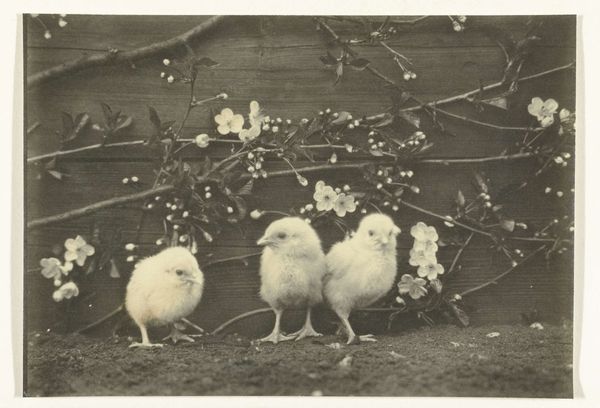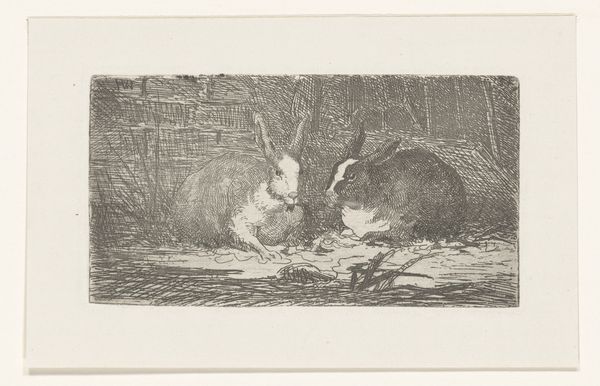
photography
#
still-life
#
pencil sketch
#
charcoal drawing
#
photography
#
pencil drawing
#
charcoal
#
watercolor
#
realism
Dimensions: height 146 mm, width 203 mm
Copyright: Rijks Museum: Open Domain
Curator: Oh, isn't that lovely! There's such a softness to this image. A certain vulnerability almost. Editor: Indeed! We are looking at "Thuringerwoud Konijn met vijf jongen," or "Thuringian Forest Rabbit with Five Young," by Richard Tepe, made sometime between 1900 and 1930. It's part of the Rijksmuseum collection, presented in that muted, sepia-toned photographic style popular at the time. Curator: Sepia really adds to that timeless quality, doesn’t it? Like something from a cherished family album. But it also makes me think about the rabbit's place within its ecosystem. Is this simply a study, or is Tepe making a commentary? Editor: Good question. Tepe worked when photography was solidifying its place as both art form and document. Think about how it challenges our understanding of the wild versus the domestic. Rabbits were being actively managed for food and fur, complicating how we understand them in the cultural landscape of the time. Curator: So, is it like these rabbits are models posing, or is Tepe trying to say something bigger about human control over nature? It definitely feels staged somehow, with all those perfect little faces staring out at us. Editor: Well, realism was a prominent artistic movement then, aiming for accurate portrayals. Yet, consider who funded these ventures. Images like these, particularly those deemed "artistic," would circulate among specific social classes, reflecting their aesthetic preferences and shaping perspectives about the natural world. Curator: Right, a very carefully constructed slice of life. It also feels kind of invasive, this very intimate moment, laid out for the viewer's scrutiny. Almost too personal to be true? Editor: Precisely! It's a negotiation, a visual dialogue. Photography democratized image-making, sure, but the lens, both literally and figuratively, remains influenced by the photographer and, in turn, by the audience’s expectations. Curator: Food for thought, isn't it? The image whispers, not shouts, its secrets. Editor: Indeed, and that silence lets us reflect on the power dynamics at play. Hopefully visitors will use this piece as a moment to think about human influence over nature and where art fits in that arrangement.
Comments
No comments
Be the first to comment and join the conversation on the ultimate creative platform.
